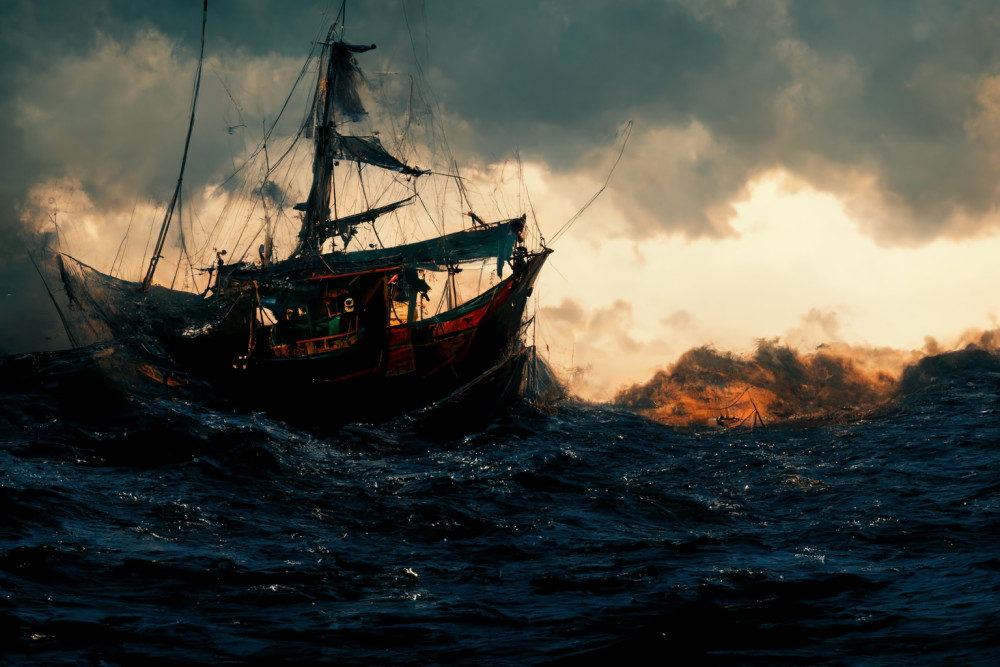The Differences Between the Big 5 AI Image Generators

Before we dig into the differences between Stable Diffusion, MidJourney, Artbreeder, Dall-E and DeepVision, we should first discuss what these algorithms do. Essentially, AI text-to-image programs learn from huge databases of existing art to create pictures based on descriptions. While the current state-of-the-art models are far from perfect, they show great promise.
Stable Diffusion
The differences between Stable Diffusion and the other big 5 AI image generators lie in the method of image generation they employ. The former refines its image as it gets closer to the prompt, whereas the latter does not. Ultimately, the Stable Diffusion algorithm stops when the generated image is the closest match to the prompt.
Stable Diffusion is available locally to install yourself, or via lots of different online interfaces. One of the best is Mage.
Stable Diffusion is a DALL-E 2-like system developed by a Los Altos-based startup called Stability AI. The system is designed to run on most high-end consumer hardware, and it can create 512x512-pixel images in seconds.
Midjourney
Midjourney is a great all-rounder. It's capable of generating realistic images, cartoons, paintings, and everything in-between. Creating images on Midjourney happens by joining Discord and sending commands to their bot. The process actually works really well, and images are sent to you via DM. You are initially sent 4 images, and you're able to request re-generation of all images, variations of a single image, or upscale one of the images.
Although Midjourney is one of the best AI image generators it does require patience and an element of skill in order to generate photo-realistic images. Often the image needs to be passed back into the generator many times to improve the realism.
Artbreeder
There are several AI image generators on the market. Artbreeder, for instance, offers thousands of illustrations. This software lets you manage them in folders and download them in JPG or PNG format. Big Sleep, on the other hand, creates realistic images from scratch. It takes about five minutes to generate the next image.
The other major AI image generator is Deep Dream, which is capable of producing artwork. This software uses various painting styles to produce realistic images. Users can choose the style and category of the image, and preview the result. Artbreeder is also an AI art generator, and it improves the image quality. It produces different variations of an image by using machine learning.
The DALL-E AI image generator is another popular tool. It allows users to create images from text, and it provides a number of API services for previewing and scalability. This tool combines machine learning and deep learning to create high-quality images. It is free to use, but the developer offers three paid plans starting at $9 per month.
DALL-E
DALL-E and Midjourney are both image generators which can change and add elements to images. Both have the ability to make photos look more realistic. Both can also adjust the lighting. However, there are some key differences between them. DALL-E uses the CLIP neural network, while Midjourney takes an artistic approach. The difference in the two is primarily the aspect ratio. DALL-E's resolution is only 1024x1024, while Midjourney's is 2048x1280. Nevertheless, they are both excellent tools for architectural purposes.
DALL-E is one of the most famous AI image generators. While it is closed off to the general public, it is still incredibly effective. It can generate images similar to the ones you see on the internet, but it struggles to match the quality of the originals. Dall-E also understands pop culture, as it can produce images of Yoda or Guy Fieri. However, it still doesn't achieve the same level of photorealism as other popular image generators.
DALL-E has 2 versions, DALL-E and DALL-E 2. DALL-E was the original AI generator, and is available to use online on Craiyon - it's often called DALL-E Mini. DALL-E 2 was only recently released and is a huge improvement, it's available to use over on the OpenAI website.
Deep Vision
One of the most controversial topics surrounding AI image generation has to do with copyright issues. Many of these programs were trained by processing billions of images on the internet without the permission of copyright holders, which has prompted a great deal of controversy and debate. However, the technology is gaining traction and is now available for consumer hardware.
AI-generated art is a relatively new field, but has already gained some momentum in recent years. Stable Diffusion, for example, is an open source text-to-image system that uses images scraped from the web. However, this program is capable of producing extremely graphically realistic images. It could be used to create images of real people doing unsavory things, and could even help spread misinformation and propaganda.